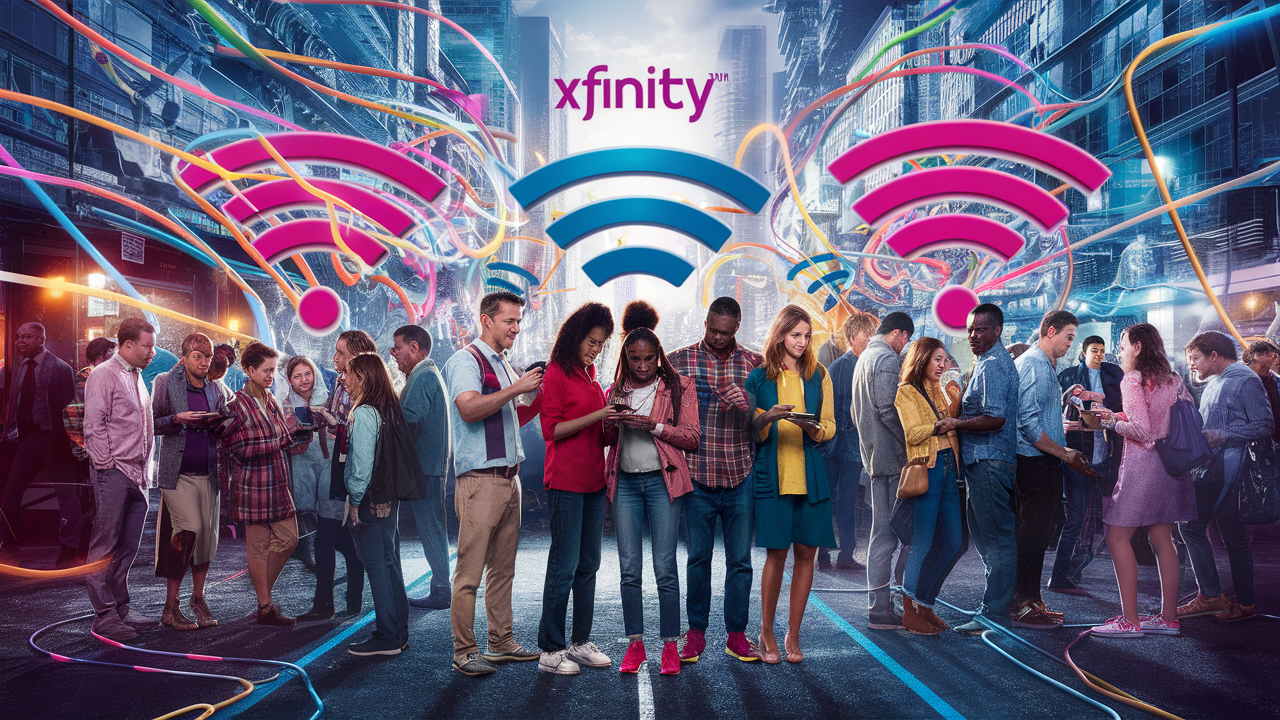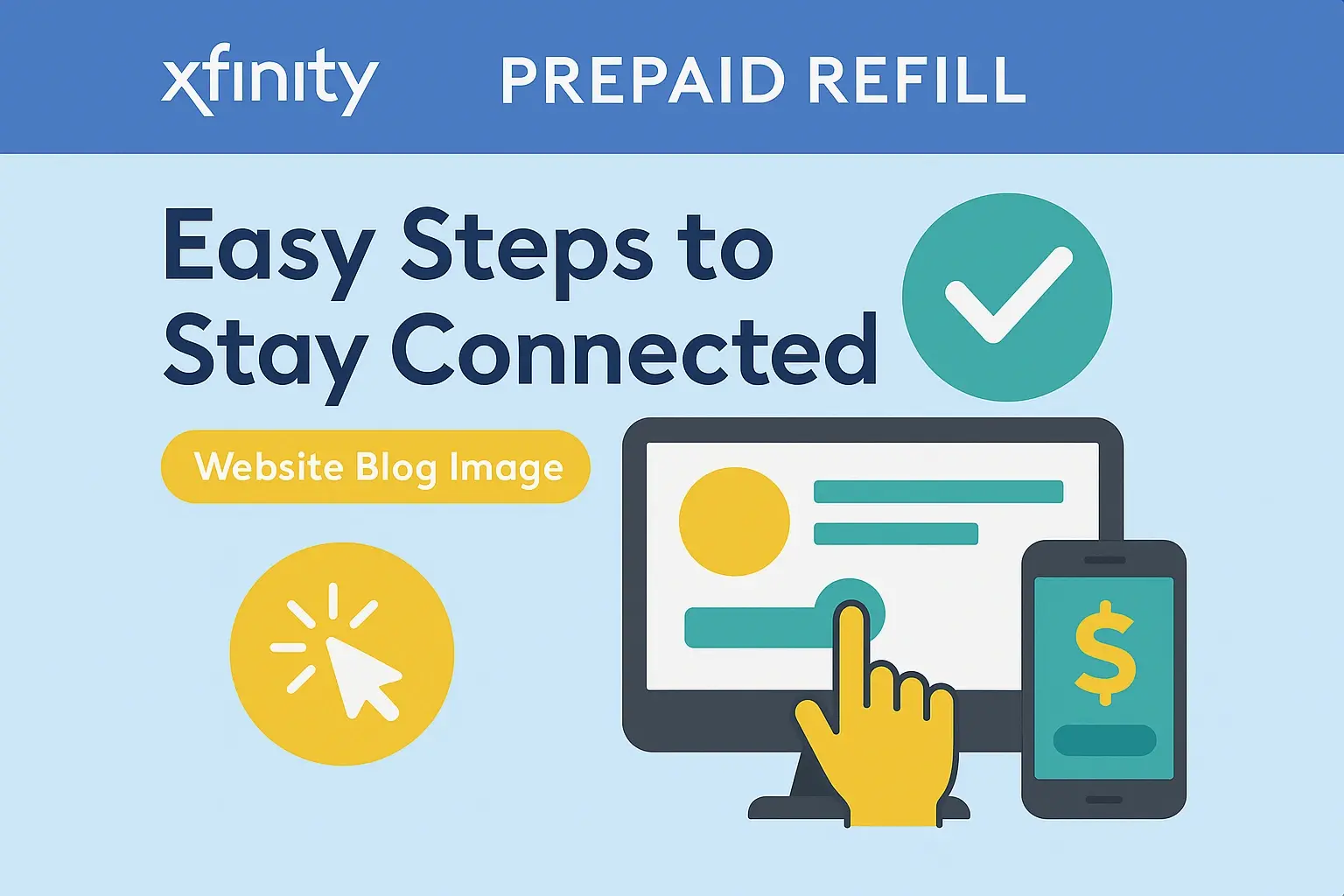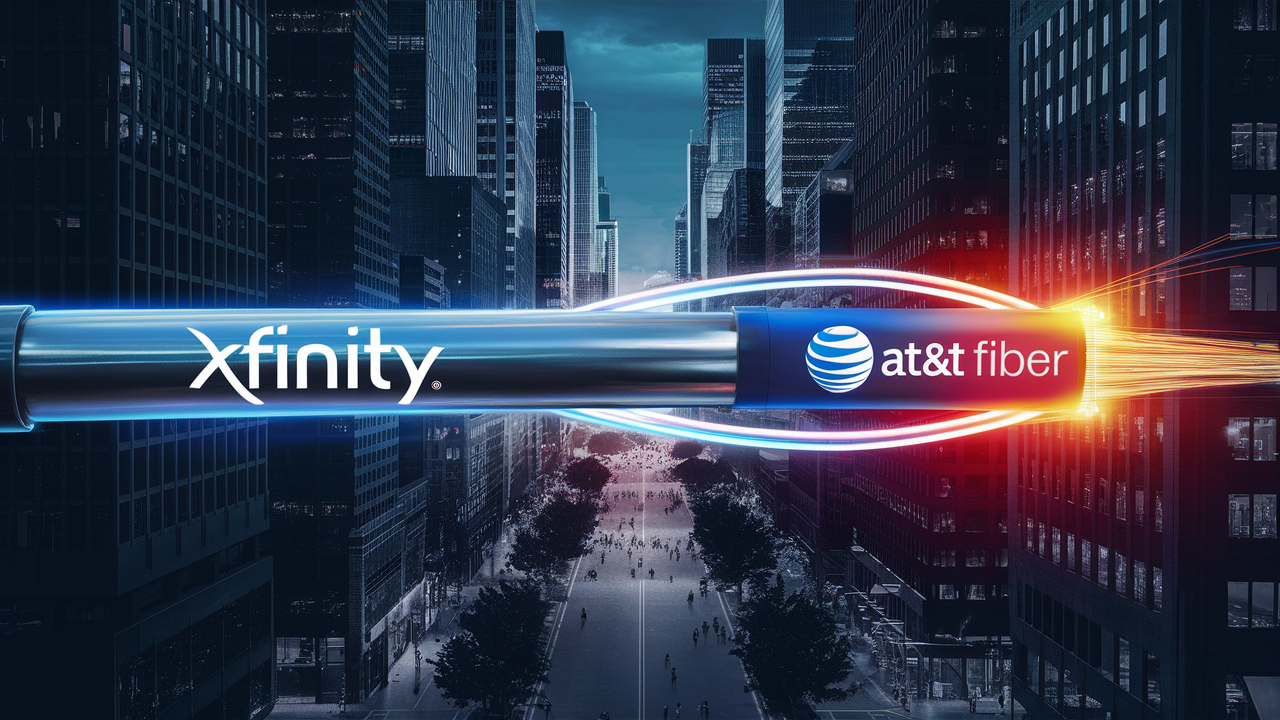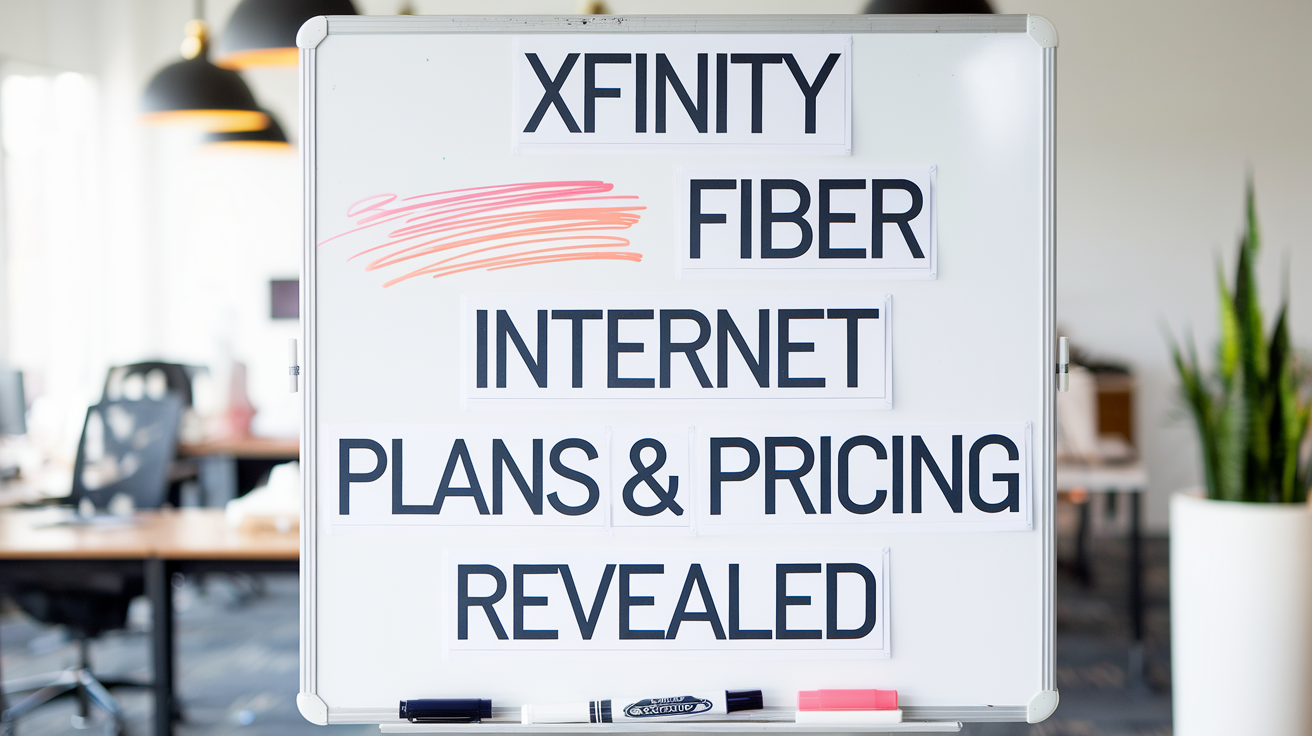Can you get Xfinity WiFi anywhere?

When considering internet connectivity, the question "Can you get Xfinity WiFi anywhere?" is a common one. While Xfinity offers extensive coverage, the reality is more nuanced than a simple yes or no. This guide explores the true reach of Xfinity's WiFi network and what factors influence your ability to connect.
Understanding Xfinity's Coverage Landscape
The question "Can you get Xfinity WiFi anywhere?" is a natural one for anyone looking for reliable internet access. Xfinity, a prominent internet service provider (ISP) in the United States, is known for its extensive network, but its reach isn't universal. Understanding the scope of Xfinity's services involves differentiating between its home internet offerings and its public WiFi hotspot network.
Xfinity's primary service is providing high-speed internet directly to homes and businesses. This requires physical infrastructure – cables and lines – to be laid in a specific area. Therefore, Xfinity home internet is only available in regions where Comcast (the parent company of Xfinity) has invested in building out its network. This coverage is concentrated in certain states and metropolitan areas, primarily in the eastern and central United States.
Beyond home internet, Xfinity also operates a vast network of public WiFi hotspots. These are designed to offer connectivity to Xfinity customers when they are away from home, and in some cases, can be accessed by non-customers through various partnerships or paid plans. These hotspots are strategically placed in public areas like parks, transit stations, and commercial districts, significantly expanding the "WiFi anywhere" aspect of the Xfinity brand. However, even this hotspot network has its limitations, tied to the geographical presence of Xfinity's core infrastructure and the deployment of these access points.
In 2025, Xfinity continues to expand its footprint, but the distinction between where you can get *home internet service* and where you can access *Xfinity WiFi hotspots* remains crucial. This guide will delve into the specifics of both, helping you determine if Xfinity WiFi is truly accessible "anywhere" for your needs. We will explore the factors influencing availability, how to locate these services, and what to expect in terms of performance and access.
Xfinity Hotspots vs. Home Internet: What's the Difference?
To accurately answer whether you can get Xfinity WiFi anywhere, it's essential to distinguish between two core offerings: Xfinity Home Internet and Xfinity WiFi Hotspots. They serve different purposes and have different availability models.
Xfinity Home Internet
Xfinity Home Internet is the traditional broadband service delivered directly to your residence or business. This is what most people think of when they sign up for internet. It requires physical infrastructure, typically coaxial cable (for their HFC - Hybrid Fiber-Coaxial network) or fiber optic lines, to be installed at the service address.
- Availability: Strictly limited to areas where Comcast has built out its network. This means if you're looking to get Xfinity service at a new home, you must check their serviceability map. They are not available nationwide.
- Performance: Generally offers higher speeds, more consistent performance, and greater reliability compared to public hotspots. Speeds can range from basic broadband tiers (e.g., 50 Mbps) to ultra-high-speed gigabit plans (e.g., 1000 Mbps or more).
- Cost: Typically involves a monthly subscription fee, often bundled with other services like TV or phone, and may require equipment rental or purchase.
- Usage: Designed for continuous, unlimited use within your home or business.
Xfinity WiFi Hotspots
Xfinity WiFi Hotspots are public access points that Xfinity customers can use when they are on the go. These are essentially WiFi routers placed in public locations, broadcasting an Xfinity network signal.
- Availability: Much more widespread than home internet. Xfinity has deployed millions of these hotspots in various locations, including businesses, parks, transit hubs, and street furniture. The goal is to provide a "WiFi anywhere" experience for their subscribers.
- Performance: Speeds and reliability can vary significantly depending on the location, the number of users connected, and the backhaul connection of the hotspot itself. It's generally not intended for heavy-duty tasks like constant 4K streaming or large file downloads, though speeds can be surprisingly good in less congested areas.
- Cost: For existing Xfinity Internet customers, access to these hotspots is usually included as a benefit of their subscription, with no additional charge. For non-customers, access might be available through limited free trials, paid passes, or partnerships with other service providers.
- Usage: Intended for convenient, on-the-go access, often with session limits or data caps for non-customers or specific plans.
The key takeaway is that while Xfinity home internet is geographically restricted, the Xfinity WiFi Hotspot network significantly broadens the reach of Xfinity's WiFi. So, can you get Xfinity WiFi anywhere? You can get *access to Xfinity WiFi hotspots* in many more places than you can get *Xfinity home internet service*.
Factors Affecting Xfinity WiFi Availability
The ability to access Xfinity WiFi, whether through home internet or public hotspots, is influenced by several key factors. Understanding these will help you determine if Xfinity is a viable option for your connectivity needs.
Geographical Limitations
This is the most significant factor. Xfinity's home internet service is not available nationwide. Comcast, the parent company, has invested heavily in building its network infrastructure in specific regions, primarily across the eastern and central United States. These areas include many major metropolitan centers and their surrounding suburbs.
Areas that are very rural, or in states where Comcast has not established a significant presence, will not have access to Xfinity home internet. This is due to the immense cost and logistical challenges of deploying and maintaining broadband infrastructure across vast, sparsely populated territories. For example, states like California, Texas, and Florida have significant Xfinity coverage in their urban and suburban areas, but their rural interiors might be underserved. Conversely, states like Montana, Wyoming, or Hawaii generally have no Xfinity presence at all.
Even within service areas, there can be micro-level limitations. For instance, some apartment buildings or specific neighborhoods might not be wired for Xfinity service due to agreements with other providers or the physical layout of the infrastructure.
Service Area Maps and Tools
The most reliable way to determine Xfinity home internet availability at a specific address is to use Xfinity's official serviceability tools.
- Online Address Checker: Xfinity's website features an interactive map or an address lookup tool. By entering a street address, you can instantly see if Xfinity services are available at that location. This tool is indispensable for anyone considering a move or looking to switch providers.
- Customer Service: If online tools are inconclusive, contacting Xfinity customer service directly can provide definitive answers. They have access to detailed network maps and can confirm availability, installation timelines, and available plans.
For Xfinity WiFi Hotspots, the availability is broader but still tied to the presence of Xfinity's core network and the deployment of hotspot equipment. Hotspots are generally found in areas with a significant concentration of Xfinity customers or in high-traffic public spaces within Xfinity's service footprint. You won't find Xfinity hotspots in areas where Xfinity has no infrastructure whatsoever.
Type of Service Required
The question "Can you get Xfinity WiFi anywhere?" also depends on what kind of Xfinity WiFi you're looking for.
- Home Internet: Requires a direct physical connection to your premises. This is the most robust and reliable form of Xfinity WiFi but is geographically limited.
- Public Hotspots: These are wireless access points. While they extend Xfinity's reach significantly, they are not a replacement for home internet for most users. Their availability is broader but still confined to areas where Xfinity has a presence and has deployed these hotspots.
- Xfinity Mobile: For Xfinity Mobile customers, their service utilizes a combination of Xfinity's WiFi hotspots and the Verizon cellular network. This means that even if you're outside of a direct Xfinity WiFi hotspot, you might still have internet access via cellular data, which is much more geographically dispersed than Xfinity's wired network.
Therefore, while you might not be able to get Xfinity *home internet* everywhere, you can access *Xfinity WiFi hotspots* in a much wider range of locations, and Xfinity Mobile users can leverage both hotspots and cellular data for broader connectivity.
How to Find Xfinity WiFi Hotspots
For Xfinity Internet or Xfinity Mobile customers, accessing the extensive network of Xfinity WiFi hotspots can be a significant benefit, providing free internet access when you're away from home. Fortunately, finding these hotspots is straightforward thanks to user-friendly tools provided by Xfinity.
Using the Xfinity Hotspots App
The most convenient and recommended method for locating Xfinity WiFi Hotspots is by using the official Xfinity Hotspots app. Available for both iOS and Android devices, this app is designed to make finding available networks quick and easy.
- Download and Install: First, download the "Xfinity Hotspots" app from your device's app store (Apple App Store or Google Play Store).
- Login: Once installed, open the app and log in using your Xfinity username and password. This verifies your eligibility as an Xfinity customer.
- Location Services: Enable location services for the app. This allows the app to use your device's GPS to show you the nearest hotspots in real-time.
- Interactive Map: The app displays an interactive map highlighting the locations of nearby Xfinity WiFi Hotspots. You can zoom in and out, pan across the map, and tap on individual hotspot icons for more details.
- Search Functionality: You can also use the search bar within the app to look for hotspots in specific areas or near particular addresses or landmarks.
- Directions: Many versions of the app can provide directions to selected hotspots, making navigation simple.
- Offline Maps: Some versions may offer the ability to download maps for offline use, which can be helpful in areas with poor cellular reception.
The Xfinity Hotspots app is continually updated with new hotspot locations, ensuring you have the most current information available. It's an essential tool for anyone who relies on Xfinity's public WiFi network.
Searching Online Maps
In addition to the mobile app, Xfinity provides online tools that allow you to search for hotspots via a web browser.
- Xfinity Website: Visit the official Xfinity website. Navigate to the section dedicated to WiFi hotspots. You will typically find a hotspot locator tool that works similarly to the mobile app.
- Interactive Map: This web-based map allows you to enter an address, city, or ZIP code to see a list or visual representation of nearby hotspots.
- Filtering Options: Some online map tools may offer filtering options, allowing you to search for hotspots in specific types of locations (e.g., retail stores, public parks).
- Account Login: While you can often view general hotspot locations without logging in, logging into your Xfinity account through the website might provide more detailed information or confirm eligibility for access.
These online tools are excellent for planning your connectivity needs before you leave home or for checking availability in a new area. They complement the mobile app by offering a desktop or browser-based alternative for searching.
By utilizing either the mobile app or the online map tools, Xfinity customers can effectively navigate and leverage the extensive network of Xfinity WiFi Hotspots, answering the "anywhere" aspect of the question in a practical sense for on-the-go connectivity.
Who Can Access Xfinity Hotspots?
The accessibility of Xfinity WiFi Hotspots is primarily designed for Xfinity customers, but there are nuances and potential pathways for others to gain access. Understanding these distinctions is key to knowing if you can leverage this network.
For Xfinity Internet Customers
This is the primary target audience for Xfinity WiFi Hotspots. If you subscribe to an Xfinity Internet plan, you generally get complimentary access to millions of Xfinity WiFi Hotspots across the country.
- Included Benefit: Access to these hotspots is typically included as part of your home internet subscription package. There is no additional charge for using them.
- Seamless Connection: Once you've logged into the Xfinity Hotspots app or connected to an Xfinity network for the first time using your Xfinity credentials, your device may automatically connect to available hotspots in the future. This provides a convenient, "set it and forget it" experience.
- Extended Coverage: The hotspots are intended to supplement your home internet service, allowing you to stay connected when you're out and about – at coffee shops, shopping malls, parks, or other public venues. This significantly extends the reach of your Xfinity WiFi.
- Data Usage: Using Xfinity WiFi Hotspots does not count against your home internet data cap. This is a major advantage for customers who are concerned about exceeding their monthly data allowances.
For Xfinity Internet customers, the answer to "Can you get Xfinity WiFi anywhere?" becomes much closer to a "yes" when considering the hotspot network.
For Non-Customers
Access for individuals who do not subscribe to Xfinity Internet service is more limited and varies depending on Xfinity's current offerings and partnerships.
- Xfinity Mobile Customers: While Xfinity Mobile primarily uses the Verizon cellular network for data, it also leverages Xfinity WiFi Hotspots to provide an enhanced connectivity experience and potentially reduce cellular data usage. So, if you have Xfinity Mobile but not Xfinity Home Internet, you likely have access to the hotspots.
- Limited Free Access: In some areas, Xfinity may offer limited free access to its hotspots for non-customers, often as a promotional tool or to provide basic connectivity in public spaces. This access might be time-limited (e.g., 30 minutes per session) or data-restricted.
- Partnerships: Xfinity sometimes partners with other organizations or service providers. These partnerships might grant temporary or specific access to Xfinity hotspots for certain groups of users. For example, a municipality might partner with Xfinity to provide public WiFi in parks.
- Paid Access: While less common, there might be options for purchasing temporary WiFi passes to access Xfinity hotspots if you are not a customer. However, Xfinity's primary strategy is to incentivize its own subscribers.
- Third-Party Apps: Occasionally, third-party WiFi aggregation apps might list Xfinity hotspots, but direct access without proper credentials is usually not permitted.
In summary, the most reliable and extensive access to Xfinity WiFi Hotspots is reserved for Xfinity Internet and Xfinity Mobile customers. Non-customers may find limited opportunities, but it's not a guaranteed or primary access method.
Limitations and Considerations of Hotspot Usage
While Xfinity WiFi Hotspots offer a valuable service, extending connectivity beyond the home, it's important to be aware of their limitations and potential drawbacks. These factors can influence the overall "anywhere" experience.
Speed and Reliability
Unlike a dedicated home internet connection, the speed and reliability of Xfinity WiFi Hotspots can be highly variable.
- Congestion: Hotspots are public access points, meaning many users can be connected simultaneously. During peak hours or in crowded locations, the available bandwidth is shared among all users, leading to significantly slower speeds and potential connection drops.
- Backhaul Limitations: The speed of a hotspot is also dependent on the internet connection it's plugged into. Some hotspots might be connected to robust fiber lines, while others might be on slower connections, especially if they are in older installations or less commercially developed areas.
- Signal Strength: The physical location of the hotspot and your distance from it will affect signal strength and, consequently, speed. Being too far from the access point or having obstructions (like thick walls) can degrade performance.
- Network Type: Xfinity hotspots broadcast under the "Xfinity WiFi" SSID. While they offer various speed tiers for home users, the public hotspot experience is optimized for general browsing and email rather than demanding applications.
In 2025, Xfinity continues to upgrade its hotspot infrastructure, but users should manage expectations. For consistent, high-speed performance, a dedicated home internet connection remains the gold standard.
Security Concerns
Using any public WiFi network, including Xfinity Hotspots, carries inherent security risks.
- Unencrypted Data: While Xfinity's network is generally secured, data transmitted over public WiFi can be more vulnerable to interception than data transmitted over a private, password-protected home network. Hackers on the same network could potentially snoop on your activity.
- Malicious Hotspots: Although less common with a reputable provider like Xfinity, there's always a theoretical risk of encountering a fake or malicious hotspot designed to steal information. Always ensure you are connecting to the official "Xfinity WiFi" network.
- Data Protection: It is strongly advised to avoid accessing sensitive information, such as online banking, credit card details, or confidential work documents, while connected to public WiFi.
- Use a VPN: For enhanced security, consider using a Virtual Private Network (VPN). A VPN encrypts your internet traffic, making it unreadable to anyone trying to intercept it, even on an unsecured network. Many Xfinity customers use VPNs for added peace of mind.
Always practice safe browsing habits when using public WiFi.
Data Caps and Usage Limits
For Xfinity Internet customers, using Xfinity WiFi Hotspots is generally a data-cap-free experience. This means your usage of these public hotspots does not count towards your monthly home internet data allowance. This is a significant benefit.
However, for non-customers who might gain limited access, or in specific promotional scenarios, there might be data caps or usage limits imposed. These could restrict the amount of data you can download or upload within a certain period, or limit the duration of your connection. Always check the terms and conditions associated with any non-standard access.
Device Compatibility
Xfinity WiFi Hotspots are designed to be compatible with most modern devices that support WiFi connectivity. This includes:
- Smartphones (iOS and Android)
- Tablets
- Laptops (Windows, macOS, ChromeOS)
- Smart TVs and streaming devices (though less common for mobile use)
- Other WiFi-enabled gadgets
The primary requirement is that your device must be able to detect and connect to standard WiFi networks. The process of connecting usually involves selecting the "Xfinity WiFi" network and then authenticating, either automatically through your Xfinity account or by entering credentials.
While compatibility is broad, performance can vary. Older devices with less capable WiFi adapters might not achieve the same speeds as newer ones, even when connected to the same hotspot.
In summary, while Xfinity WiFi Hotspots offer convenience, users should be mindful of potential speed variations, security risks, and the fact that optimal access is reserved for Xfinity subscribers.
Alternative Options if Xfinity is Unavailable
If you've determined that Xfinity home internet is not available at your location, or if you need connectivity in an area without Xfinity WiFi hotspots, several alternative solutions can provide internet access.
Other ISP Providers
The most direct alternative to Xfinity home internet is to explore other Internet Service Providers (ISPs) that operate in your area.
- Cable Providers: Competitors like Spectrum, Cox, or Optimum (depending on your region) offer similar cable internet services. Their availability maps are distinct from Xfinity's, so you might find coverage where Xfinity doesn't reach.
- Fiber Optic Providers: Companies like AT&T Fiber, Verizon Fios, Google Fiber, or local fiber networks offer high-speed internet, often with symmetrical upload and download speeds. Fiber optic technology is becoming increasingly widespread, especially in urban and suburban areas.
- DSL Providers: Providers using Digital Subscriber Line (DSL) technology, often through telephone lines, are typically available in more areas than cable or fiber, though speeds are generally lower. CenturyLink (now Lumen) is a common provider of DSL.
- Satellite Internet: For very remote or rural locations where terrestrial broadband is unavailable, satellite internet providers like HughesNet or Viasat are options. However, these services often come with higher latency, lower speeds, and stricter data caps compared to other technologies. Starlink, by SpaceX, is a newer satellite internet option aiming to provide higher speeds and lower latency.
- Fixed Wireless Internet: This technology uses radio waves to connect a home or business to a nearby tower. It can be a good option in areas where wired infrastructure is lacking but still offers line-of-sight to a provider's tower.
When researching alternatives, always check availability at your specific address and compare plans based on speed, data allowances, contract terms, and pricing.
Mobile Hotspots
If you have a smartphone plan that includes a mobile hotspot feature, this can be a viable way to get internet access on other devices.
- Cellular Data: Your smartphone uses its cellular data connection (e.g., 4G LTE or 5G) to create a personal WiFi network that other devices can connect to.
- Convenience: This offers excellent portability, allowing you to get online from virtually anywhere you have a cellular signal.
- Data Limits: Be aware of your mobile plan's data limits. Using your phone as a hotspot can consume data quickly, especially if you're streaming video or downloading large files. Exceeding your data allowance can lead to reduced speeds or additional charges.
- Battery Drain: Running a mobile hotspot can significantly drain your smartphone's battery, so carrying a portable charger is often recommended.
- Speed: The speed of a mobile hotspot is dependent on your cellular network's signal strength and the network's overall capacity in your area.
Major carriers like Verizon, AT&T, and T-Mobile offer various plans with mobile hotspot capabilities.
Public WiFi Networks
Beyond Xfinity's network, numerous other public WiFi options exist, though they may not always be as convenient or reliable.
- Commercial Establishments: Many coffee shops (like Starbucks), fast-food restaurants, libraries, bookstores, and shopping malls offer free WiFi to their patrons.
- Municipal WiFi: Some cities and towns provide free or low-cost public WiFi in parks, community centers, or downtown areas.
- Other ISP Hotspots: Other ISPs also operate their own public hotspot networks. For instance, Spectrum customers can access Spectrum WiFi hotspots.
- Security Risks: As mentioned earlier, public WiFi networks can be less secure. Always exercise caution and consider using a VPN.
- Reliability: The quality of public WiFi can vary greatly. Some networks are fast and stable, while others are slow, unreliable, or have strict time limits.
While public WiFi can be a lifesaver, it's not always a consistent or secure solution for primary internet needs.
By exploring these alternatives, you can ensure you have internet access even if Xfinity's services are not available or suitable for your situation.
The Future of Xfinity Coverage
Xfinity, operated by Comcast, is continuously working to expand its network and enhance its service offerings. The question of "Can you get Xfinity WiFi anywhere?" is addressed through ongoing investment in both its wired infrastructure and its public WiFi hotspot network.
Expansion of Home Internet: Comcast consistently invests billions of dollars annually in upgrading and expanding its HFC (Hybrid Fiber-Coaxial) and fiber optic networks. This expansion primarily targets areas where Xfinity currently has a limited presence or where demand is high. While nationwide coverage is unlikely due to the immense cost and logistical challenges, expect Xfinity to continue growing its footprint in underserved suburban and exurban areas, as well as in new developments. The focus is often on areas with higher population density where the investment is most justifiable.
Advancements in Technology: Xfinity is at the forefront of deploying new technologies like DOCSIS 4.0, which promises to deliver multi-gigabit speeds over its existing cable infrastructure. This means that even in areas where fiber is not yet deployed, customers can experience significantly faster internet speeds. This technological advancement aims to make their current service areas more competitive and appealing.
Growth of WiFi Hotspots: The Xfinity WiFi Hotspot network is a key component of their strategy to provide ubiquitous connectivity. Comcast continues to add new hotspots in public areas, aiming to create a dense network that offers convenience to their subscribers. In 2025, the number of these hotspots is expected to grow, with a focus on high-traffic locations and areas where Xfinity has a strong customer base. This expansion directly addresses the "anywhere" aspect of their WiFi offerings for mobile users.
Xfinity Mobile Integration: The synergy between Xfinity Home Internet, Xfinity WiFi Hotspots, and Xfinity Mobile service will likely deepen. As Xfinity Mobile relies on both cellular data and WiFi hotspots, the expansion of the hotspot network directly benefits mobile users, potentially offering more seamless transitions between networks and reducing reliance on cellular data plans.
Increased Competition: The broadband market is highly competitive, with other providers also investing in network expansion and technological upgrades. This competition can drive Xfinity to accelerate its own expansion efforts and improve service quality to retain and attract customers.
While Xfinity may never be available "everywhere" in the literal sense, its ongoing efforts in infrastructure development, technological innovation, and hotspot deployment are steadily increasing the reach and accessibility of its WiFi services for its customers. For those in areas not yet served, the landscape of alternative providers is also evolving, offering more choices than ever before.
Conclusion: Can You Get Xfinity WiFi Anywhere?
The definitive answer to "Can you get Xfinity WiFi anywhere?" is nuanced. If you are referring to Xfinity Home Internet service, the answer is a clear no. Xfinity's wired broadband is geographically restricted to areas where Comcast has invested in building and maintaining its physical network infrastructure, primarily concentrated in certain regions of the United States. Availability must be checked on an address-by-address basis.
However, if you are asking about accessing Xfinity WiFi Hotspots, the answer is a much more optimistic yes, in many places. Xfinity operates a vast network of public WiFi hotspots strategically located in commercial areas, public spaces, and transit hubs. For existing Xfinity Internet or Xfinity Mobile customers, these hotspots offer a convenient way to stay connected on the go, at no additional cost and without impacting home data caps. The Xfinity Hotspots app and online locator tools make finding these access points straightforward.
Therefore, while Xfinity home internet isn't universally available, the public hotspot network significantly broadens the scope of Xfinity WiFi access. For Xfinity subscribers, the ability to connect to WiFi is extended far beyond the confines of their home. For those without Xfinity service, alternative ISPs, mobile hotspots, and other public WiFi networks remain viable options. Always verify serviceability for home internet and utilize the provided tools to locate available hotspots for on-the-go connectivity.





